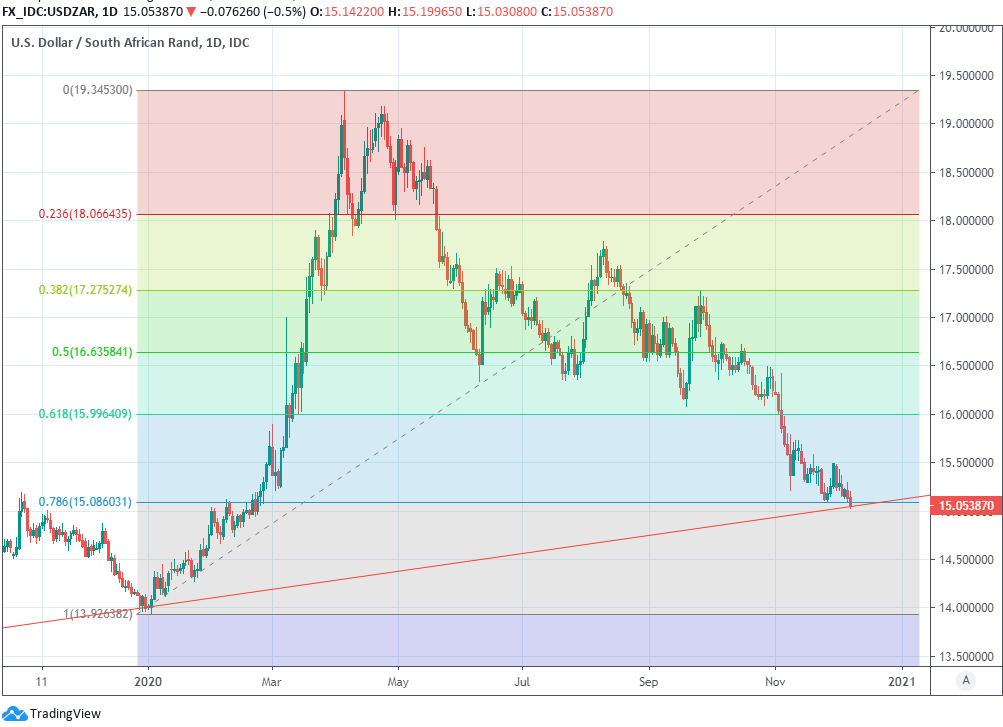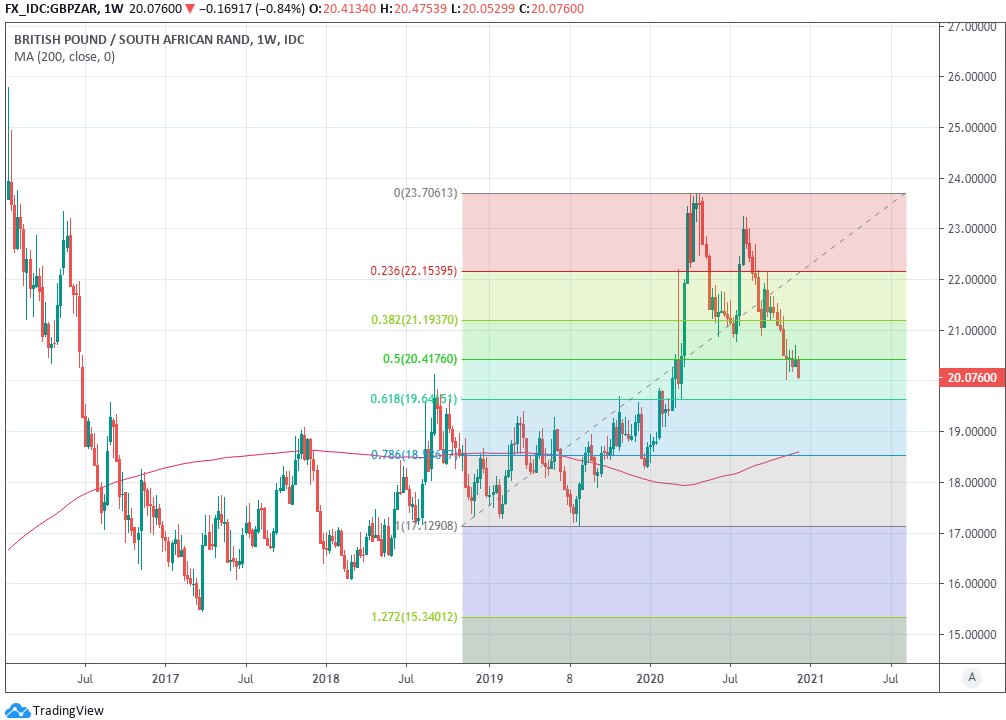South African Rand Outperforms with Economy but Upside Seen as Limited
- Written by: James Skinner
-

Image © Adobe Images
- GBP/ZAR spot rate at time of writing: 20.06
- Bank transfer rate (indicative guide): 19.36-19.50
- FX specialist providers (indicative guide): 19.76-19.92
- More information on FX specialist rates here
The Rand outperformed on Tuesday after the South African economy made a mockery of already bullish expectations for its third-quarter rebound, although some analysts say all of the good news is already reflected in the price of the currency and that further upside should be limited.
South Africa's Rand was advanced against all of its major developed and emerging world rivals after Statistics South Africa said that GDP rose at an annualised pace of 66.1% last quarter, which was a significant outperformance of the market consensus for a 52.6% increase.
Tuesday's increase was far greater than the historic -51.7% collapse observed in the second quarter when vast parts of the economy came to a standstill as a result of government curbs on activity aimed at containing the coronavirus.
"The prospects of a future recovery are likely to be more decisive than the backwards glance. However, there are dark clouds on the horizon, with the (still) slow rise in new infections the country is facing a second wave that has long since taken hold amongst its trade partners," says Elisabeth Andreae, an analyst at Commerzbank. "The hope of vaccine success is rising faster than the latter can be implemented. That entails the risk of disappointment for global risk sentiment and thus the rand exchange rates."
Leading South African industries to recovery ;last quarter were mining firms, which saw collective output rise by 288.3% during the period, followed closely by a manufacturing industry that saw production increase 210.2%. Firms operating in the trade, catering and accomodation industry were next in line among the most notable with output up by 137%, although Statistics South Africa said that all industries and economic sectors expanded last quarter. 
Above: USD/ZAR shown at daily intervals with Fibonacci retracements of 2020 rally and 2018-to-2020 trendline.
"We connue to trade tactically here, looking to play the 15.10-15.50 recent range. The 15.10 is an important technical support – trendline from 2018," says Yuliya Kryzhanovska, a trader at Credit Suisse.
USD/ZAR came under further pressure following the data, leading it to test an important set of technical support levels on the charts.
The 78.6% Fibonacci retracement of this year's rally at 15.08 and the 2018 trendline referenced by Credit Suisse's Kryzhanovska coincide closely with each other and have previously prevented the Rand the from reaching new highs.
Overcoming such levels would typically be a precursor to an extended rally, although some analysts and economists see the Rand' being limited by a range of factors in the short-term, meaning that if the above-referenced supports are broken at all in the coming days then the resulting gains might not last for long.
"The domestic currency is unlikely to see much strength beyond R15.00/USD on a sustained basis," says Annabel Bishop, chief economist at Investec. "Further marked advancement in the rand will require additional, substantial good news which has not already been discounted, and indeed the rand is still at risk of depreciation in the year ahead, and will remain subject to the risk of high volatility as well. While most of the news on vaccines has already been discounted by financial markets, structural problems remain to trip up sentiment, particularly the build-up of sovereign debt in most countries over the past year, while economic recoveries are by no means complete."
Above: Pound-to-Rand rate at daily intervals with Fibonacci retracements of 2020 rally indicating possible support levels.
The Rand has been lifted sharply in recent months, leading it to outperform all major developed world currencies in November as well as most of its major emerging market counterparts, as the U.S. Dollar came apart at the seams in the wake of last month's presidential election before unravelling further still in response to vaccine progress.
The prospect of reduced trade tensions between the U.S. and China under a new White House regime and a vaccine-induced global economic recovery next year have incentivised demand for commodities as well as currencies that are underwritten by them like the Rand.
"The rand will continue to flirt with the 15.10 level and, should a market rally resume, could even trade stronger, but there are many ifs in this case," says Siobhan Redford, an economist at Rand Merchant Bank. "The November rally, and even last week’s generally good performance, has slowed with the Nikkei and Hang Seng recording mild contractions thus far today, the Chinese bourse flat and the ASX up mildly. A lack of news on stimulus – particularly in the US – is probably another cause of caution in markets today, and thus an improvement in new infection levels, a stimulus package or even a Brexit deal could very well spur markets to return to risk-on trade."
Britain delivered the first shot of the Pfizer and BioNTech coronavirus vaccine on Tuesday after being the first to grant regulatory approval to one of the various competing innoculations to be working their way through the research and development pipelines of the world's top pharmaceuticals companies.
The advent of vaccines puts ligth at the end of the tunnel for economies that have been battered and bruised by coronavirus-related restrictions, as it could reduce the compulsion of governments to continue imposing on business and everyday life. However there are concerns over how long it might be before vaccines can be manufactured in enough mass to provide a sufficiently large portion of the global population with access which, along with other risks to the outlook, could limit the Rand's gains up ahead.










